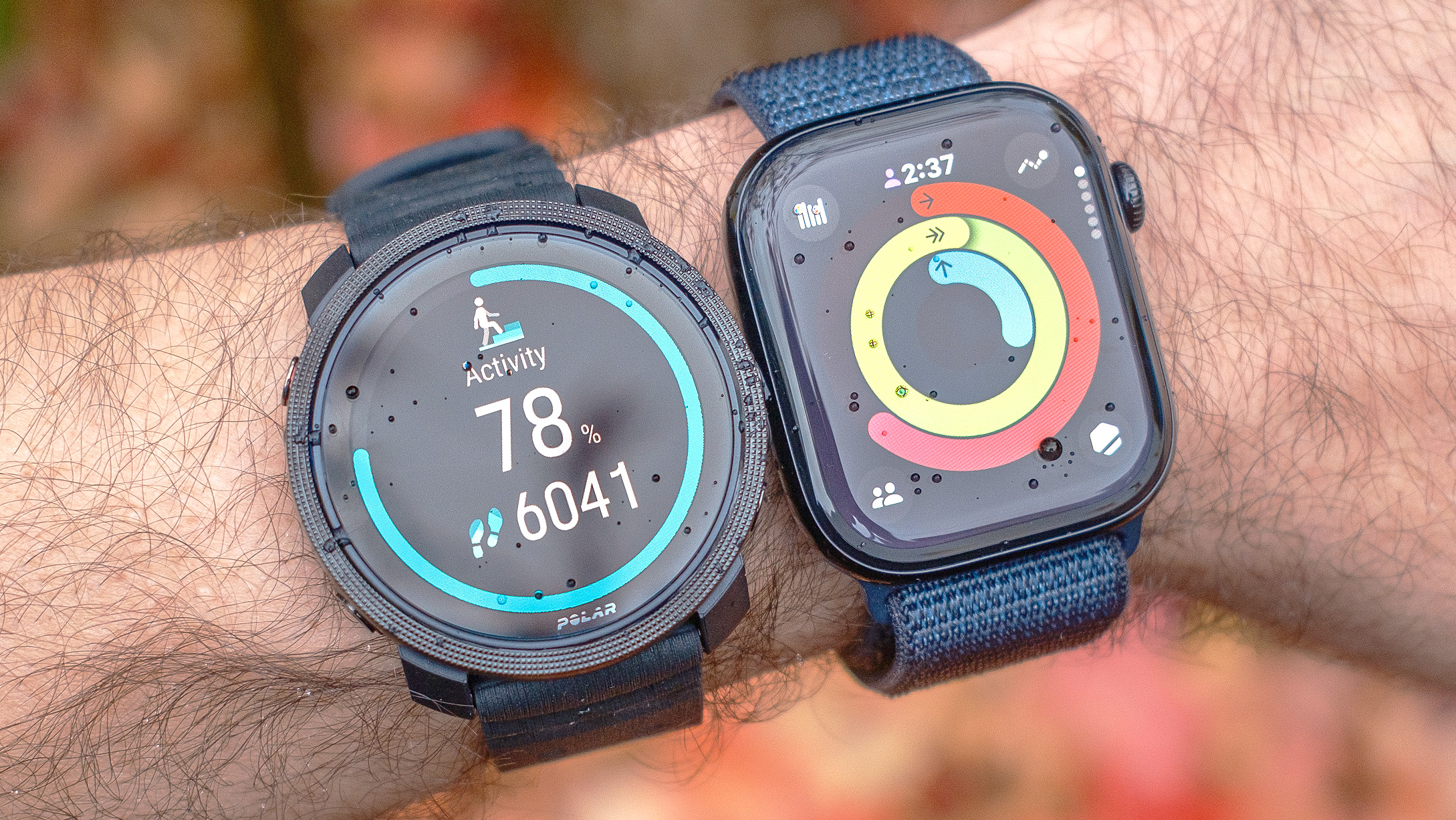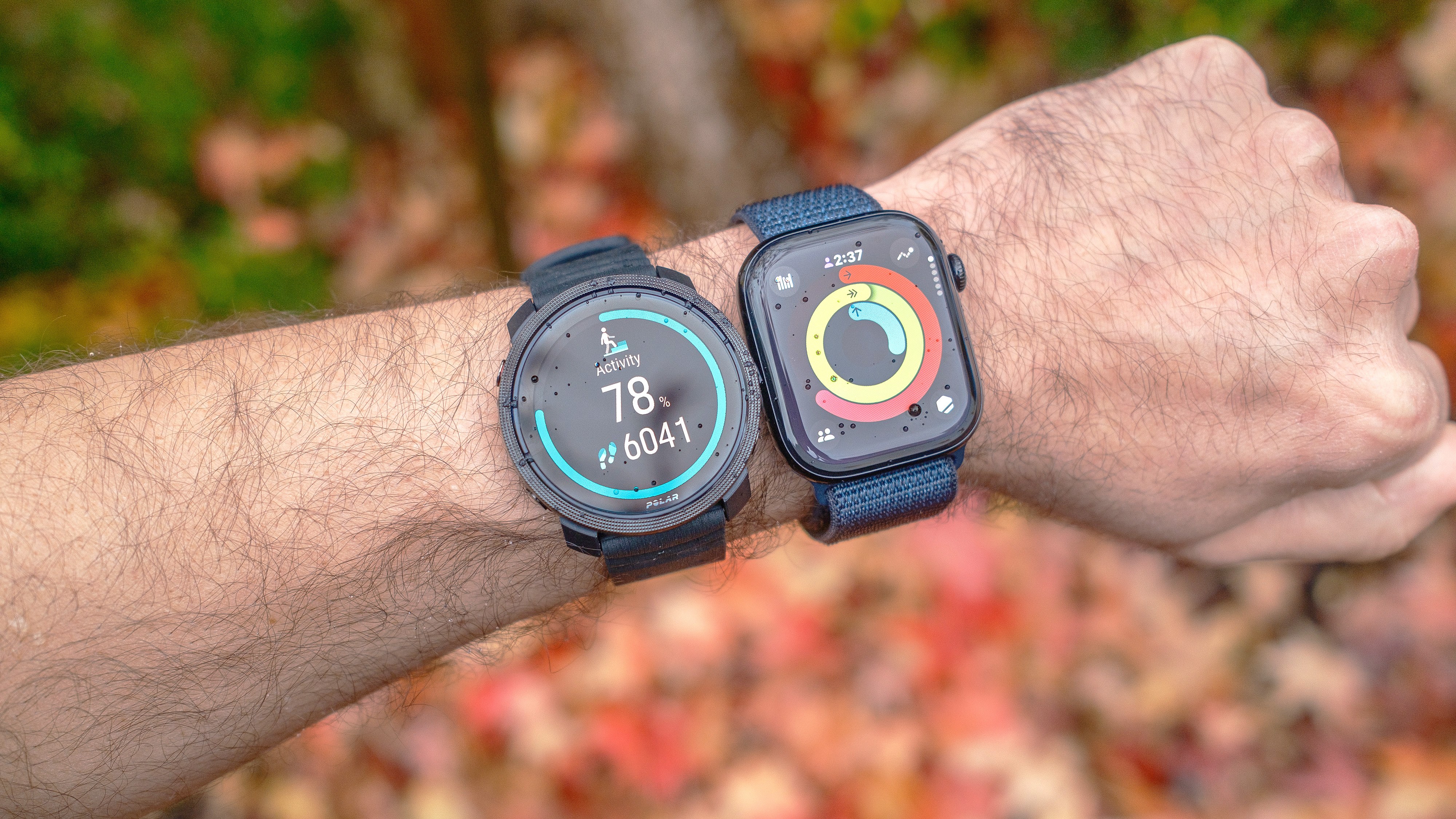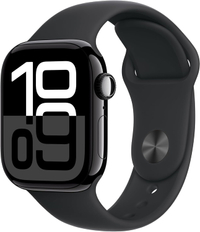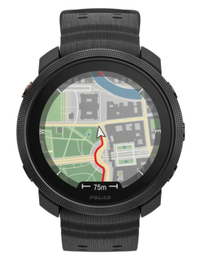I walked 6,000 steps with the Apple Watch Series 10 vs. Polar Vantage M3 — here's the winner
Is the latest Apple Watch or the Polar Vantage M3 more accurate?

The Vantage M3 is the latest midrange smartwatch release from the Finnish wellness tech brand Polar. Priced at $499, this sporty and well-constructed device is a direct competitor to the recent Apple Watch Series 10, which also starts at $499 and is one of the best smartwatch models available.
It's worth noting that the Polar is a dedicated workout and adventure-tracking watch with no third-party apps and limited smart features, while the Apple Watch 10 is a full-featured wearable with an enormous app library.
That distinction aside, both of these watches offer similar fitness and health monitoring capabilities like full-time heart rate tracking, ECG and skin temperature sensors, sleep and workout recovery insights, a built-in barometer for measuring elevation changes and onboard GPS, though the Polar sports a more advanced dual-band antenna and can perform SpO2 readings... sorry, Apple!
You also get better battery life with the Polar, which can last for up to seven days in watch mode and 30 hours in GPS tracking mode. The Apple Watch 10, meanwhile lasts just 24 hours in low-power mode and seven hours with GPS tracking.
When it comes to keeping tabs on individual exercises like walks, runs, bike rides and hikes, both device provides detailed post-workout reports with comparable insights into total distance, elevation gained, max and average heart rate, pace, calories burned and more. The question is, which one is more accurate?
To find out, I strapped the Apple Watch 10 and Polar M3 to either wrist and set out on a gloomy afternoon for a hearty one-hour walk around chilly Seattle, Washington. Read on for the results.
Apple Watch Series 10: starting at $399
The latest Apple Watch release is also the best Apple Watch for most people thanks to a thinner, lighter design, upgraded screen with improved viewing angles and faster charging times. It also features a huge app library and tons of smart features, including new tools for on-wrist translations and health monitoring.
Polar Vantage M3: $399
The Polar Vantage M3 is a mid-range sports and adventure watch with a bright AMOLED touchscreen, tough-built case, dual-band GPS for highly accurate location tracking, up to seven days of battery life and loads of health tracking sensors and fitness training tools. Users can also download and save offline maps, a rare feature to find in a watch at this price.
Apple Watch 10 vs. Polar Vantage M3: Walk test
Because neither Polar nor Apple provide step count totals for individual walks, hikes or runs — which I continue to find incredibly frustrating — I began my test seated at my desk with both watches charged up to 100% to also test battery exhaustion.
Sign up to get the BEST of Tom's Guide direct to your inbox.
Get instant access to breaking news, the hottest reviews, great deals and helpful tips.
With the Apple Watch secured on my left wrist and the Polar watch on my right, my journey began. As always, I manually counted every step I took for the duration of the walk using an old-school tally counter to denote every hundred steps. I also tracked the walk using the Strava app on my iPhone 12 Mini for additional data.
6,000 steps and almost an hour to the dot later, I returned to my front doorstep and checked the results of each watch, careful not to take any additional steps before jotting down my day's total from within the Polar Flow and Apple Fitness apps.
Apple Watch 10 vs. Polar Vantage M3: Walk test results
| Header Cell - Column 0 | Apple Watch 10 | Polar Vantage M3 | Control |
|---|---|---|---|
| Total step count | 5,967 steps | 6,015 steps | 6,000 steps (manual count) ; 6,078 (Strava) |
| Total Distance | 3.1 miles | 3.07 miles | 3.27 miles (Strava) |
| Total elevation gain | 541 feet | 520 feet | 519 feet (Strava) |
| Average pace | 19 mins, 32 secs per mile | 20 mins, 10 secs per mile | 17 mins, 49 secs per mile |
| Average heart rate | 144 bpm | 117 bpm | n/a |
| Maximum heart rate | 179 bpm | 144 bpm | n/a |
| Calories burned | 538 calories | 562 calories | n/a |
| Battery percentage used | 7% | 6% | n/a |
Both devices were within 50 steps of my manually counted total, which is quite impressive, but the Polar Vantage M3 was closer, overcounting by just 15 steps, compared to the Apple Watch undercounting by 33.
Distance data is a near-match and Apple and Polar recorded similar average paces, as well. However, both are noticeably slower than Strava's average pace. This is probably because Strava aggressively pauses workout tracking when you physically stop moving even for just a few seconds to wait for a passing car or a crosswalk light to change.
The Apple Watch measured around 20 additional feet of elevation gain compared to the Polar and Strava, suggesting it may have overcalculated my climb by just a bit. Interestingly, in my last walk test with the Apple Watch 10 vs. Pixel Watch 3, it was the Apple Watch that had nearly the same total elevation gain as Strava and its competitor that seemingly miscalculated.
Heart rate data, meanwhile, is noticeably different between the Apple Watch and the Polar. The Apple Watch calculated my average heart for the walk at 144 bpm but the Polar watch said that same number was my maximum heart rate. So, what's the deal?
Based on numerous prior walk tests, my hunch is that the Apple Watch's data is largely correct and the Polar watch vastly undercalculated my heart rate. For this walk, I moved quite vigorously during the second half, and with a steep three-block hill to climb right at the finish, I was definitely breathing deeply and sweating profusely by the time I made it home, suggesting a fairly elevated heart rate.
Looking again at my previous walk test, where I didn't push myself quite so hard, the Apple Watch measured my average heart rate at 133 bpm and the Pixel Watch 3 measured it at 129 bpm. Assuming those numbers are close to correct, then 144 bpm seems like a sensible average for this walk. By the way, my max heart rate for the prior walk was 172 bpm (Apple) and 167 bpm (Google), which matches up with the Apple Watch's 179 bpm max measure for this walk.
Both devices calculated roughly the same amount of calories burned for my walk, around 550. And despite vastly different battery life claims regarding GPS tracking usage, the Apple Watch only used 1% more battery than the Polar.
Apple Watch 10 vs. Polar Vantage M3: And the winner is...

With the step count total being the primary metric we use to determine a winner, the Polar Vantage M3 wins this challenge, beating out the Apple Watch Series 10 by a mere 18 steps. There is one major caveat, though. While most of the metrics between the two devices line up nicely, the Polar M3 appears to have undermeasured my heart rate by a marked amount.
Further investigation is needed to determine whether this seemingly faulty heart rate data is a one-off or something more telling. Either way, additional testing on the Polar Vantage M3 is planned, including a full review. So, stay tuned!
Which smartwatch models would you like me to test head-to-head next? Let me know in the comments below.
More from Tom's Guide

Dan Bracaglia is the Tom’s Guide editorial lead for all things smartwatches, fitness trackers and outdoor gear. With 15 years of experience as a consumer technology journalist testing everything from Oura Rings to instant cameras, Dan is deeply passionate about helping readers save money and make informed purchasing decisions. In the past year alone, Dan has assessed major product releases from the likes of Apple, Garmin, Google, Samsung, Polar and many others.
An avid outdoor adventurer, Dan is based in the U.S. Pacific Northwest where he takes advantage of the beautiful surroundings every chance he gets. A lover of kayaking, hiking, swimming, biking, snowboarding and exploring, he also makes every effort to combine his day job with his passions. When not assessing the sleep tracking and heart rate accuracy of the latest tach gadgets, you can find him photographing Seattle’s vibrant underground music community.


